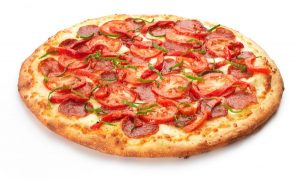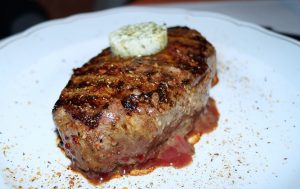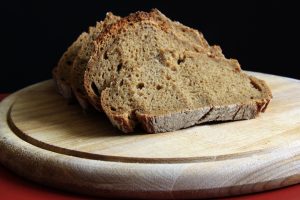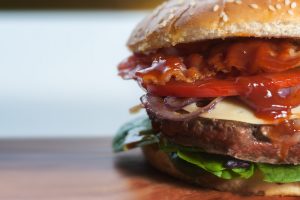[Article updated on 19/09/2023]
Fast foods (pizza, burger, kebab) are a form of food prepared and served in a very short time. Appearing in the United States in the 1950s, fast food has conquered the entire planet. This type of restoration today occupies a preponderant place in Westernized societies where time has become a rare commodity. Every day, fast food serves millions of people around the world. Described by nutritionists as junk food, the production of fast food continues to grow from year to year. Pizza, burgers and kebabs have become great fast food classics due to their largely affordable costs and their rather practical nature.
The kings of fast food
The pizza

Pizza is a dish of Italian origin that is usually served in restaurants called pizzerias. Pizza is actually a flatbread topped with a selection of meats, vegetables and condiments. Its most frequently encountered ingredients are tomatoes and cheese, but it is not uncommon to see pizzas topped with minced meat, mushrooms, onions, garlic, chicken or sausages.
Pizza is originally a gastronomic specialty designed with top quality ingredients. The variant served in fast food chains is far from coming close, because these fast food establishments use a host of tricks to increase their margins by investing as little as possible in quality ingredients.
The kebab

The kebab is a dish consisting of a bun topped with grilled meat or seafood as well as vegetables such as onion, tomato and pepper. Pork, lamb, veal, chicken or pork meat is cut into thin strips and roasted on a vertical rotisserie. Depending on the region, the kebab includes normal or unleavened bread, grilled meat, raw vegetables, sauce and possibly fries. Vegetarian versions have recently appeared.
A snack very popular with younger generations, Kebab is generally produced by personal businesses. It competes fiercely with burgers and is very popular in countries like Germany. Generally produced by personal businesses, the kebab does not escape the abuses experienced by other fast foods.
The Giant of Quick
The Giant is the iconic dish of Quick, a fast food chain which was founded in Belgium. Founded in 1971 by Baron François Vaxelaire, Quick is the first fast food chain of European origin. The fast food chain was bought in 2007 by CDC, the French government’s investment fund. Now owned by Burger King France, Quick has a network of more than 400 restaurants.

The Giant is a burger made up of two slices of sesame bread, 2 pure beef minced steaks, lettuce, onion and melted cheddar. This burger is best known for its caper-based sauce. This sauce is made from sulfur dioxide, cow’s milk, shellfish, celery, mustard, eggs, fish and soy.
McDonald’s Big Mac

The Big Mac is the icon of the famous American fast food chain McDonald’s. McDonald’s, the world’s largest fast food chain, was founded in 1940 by Richard and Maurice McDonald. Today, McDonald’s is present in 119 countries around the world and serves more than 68 million customers daily in its 36,000 restaurants.
Introduced for the very first time in 1967 in Pittsburgh, the Big Mac consists of three slices of bread, two pure beef patties weighing 45 grams each, lettuce, American cheese, pickles and onions. Its sauce has as ingredients corn syrup, soybean oil, vinegar, sugar, salt, garlic powder and a very impressive number of additives including xanthan gum, calcium chloride and polyoxyethylene sorbitan monooleate.
The Burger King Whopper

The Whopper is the flagship product of the international fast food chain Burger King. Founded in 1953 in the United States under the name Insta-Burger King, Burger King today has more than 15,000 points of sale across 100 countries.
Introduced in 1957, the Whopper has gone through several reformulations, including a change in the bun and the size of the burger. The Whopper is a hamburger consisting of a 113 gram flame-grilled steak, sesame bun, mayonnaise, lettuce, tomatoes, pickle and sliced onions. Some variations of the Whopper may contain American cheese, bacon, mustard or guacamole. A vegetarian version and another based on chicken are available in some regions.
Can fast food restaurants all be in the same boat? Are they all as bad as they are made out to be? Among the dishes presented, which is the least healthy? To answer these questions, I will try to compare point by point the nutritional values of pizza, kebab, McDonald’s Big Mac, Burger King Whopper and Quick Giant.
Junk food: discover the truth infographic!
Calories

For its functioning, the organization must burn calories that it extracts ingested carbohydrates, lipids and proteins. The energy released by these nutrients is involved in muscle contraction, brain function and many other metabolic processes. For an adult carrying out average physical activity, the recommended number of kilocalories per day is 2000. It is also necessary to maintain a balance between calorie sources. So, protein should make up 10-35% of total calories. Carbohydrates, on the other hand, should make up 45 to 65% of total calories. Fats, for their part, should represent 20 to 35% of total calories. The body primarily uses carbohydrates as a source of energy. These are essential for the proper functioning of the brain, because it consumes the majority of them.
Fats, although more energetic than carbohydrates, are used as a last resort. They are useful for thermal regulation and during intense physical efforts. This is what is more commonly called burn fat. In addition, the metabolism of fats requires the hydrolysis of carbohydrates. One gram (1 g) of carbohydrates provides 4 kilocalories, as does one gram (1 g) of protein. One gram (1 g) of lipids provides the equivalent of 9 kilocalories. It is important to closely monitor your calorie consumption if you want to stay in shape. You must ensure that the calories consumed in a day are equal to those expended in physical efforts. When intake exceeds the body’s energy expenditure, the rest of the calories are stored, either in the form of glycogen in the liver and red muscles, or in the form of fat.
An imbalance between intake and consumption can therefore cause health problems. Overconsumption of calories has the immediate consequence of weight gain and an increase in adipose tissue. Over time, excess calories can lead to overweight or obesity. This imbalance can also lead to cardiovascular disease and diabetes. To avoid these problems, you can either go on a weight loss diet, play sports, or closely monitor the calorific value of the foods you ingest.
Classification
- The Burger King Whopper is above the fray with its 630 kilocalories which represent 32% of the recommended daily intake (RDA) for a person with average physical activity. In detail, 53% of the Whopper’s kilocalories come from fat, 31% from carbohydrates and 16% from protein.
- The kebab provides 574 kilocalories, or 29% of the RDA. The majority of calories in kebab, 56%, come from carbohydrates while 17% of these calories come from fat and 27% are provided by proteins.
- The Quick Giant provides 535 kilocalories, or 27% of the recommended daily intake. In detail, 63% of these calories come from fat, 18% from carbohydrates and 19% from protein.
- The Big Mac provides 530 kilocalories, or 26% of the RDA. Looking at the details of these calories, we realize that 46% come from fats, 36% from carbohydrates and 18% from proteins.
- Pizza provides 265 kilocalories, or 13% of the RDA. The calorific content of pizza includes 42% fat, 42% carbohydrates and 16% protein.
In summary
Among these foods (pizza, burger, kebab), Burger King’s Whopper has the most calories. It alone provides more than a third of the recommended daily intake. Eating two Whoppers during the same meal can therefore clearly contribute to excess kilocalories.
Although relatively less caloric than the Whopper from Burger King, the Giant from Quick, the Big Mac and pizza should be closely monitored, because their calorie balance is very poor due to their excessive fat content.
Cholesterol

Cholesterol is a lipid molecule, from the sterol family, which is synthesized by all animal cells, because it is an essential structural component of the plasma membrane. Cholesterol is necessary to maintain the integrity and fluidity of cell membranes. In addition to this role, cholesterol serves as the precursor to the biosynthesis of steroid hormones. Cholesterol is also involved in the process of synthesizing vitamin D. Remember that cholesterol is also produced in the body by the liver. It is, in fact, a byproduct of the body’s normal metabolism.
There are two main types of cholesterol, namely good cholesterol (HDL) and bad cholesterol (LDL). The first has a beneficial effect on the body, because it helps eliminate fat deposits that form in the arteries. HDL removes bad cholesterol from cells and the bloodstream and takes it to the liver where it is broken down. The second can be the source of many problems. Indeed, when it is in excess, bad cholesterol creates fat deposits on the walls of blood vessels and reduces the diameter of the arteries. This results in arteriosclerosis, which results in difficulty in blood circulation in the body. To compensate for this discomfort, the heart is forced to make more effort. Over time, this excess cholesterol can lead to cardiovascular and coronary diseases such as high blood pressure and heart attacks. Bad cholesterol can also induce a stroke.
Classification
- At the top of the table, in terms of cholesterol, we find the Burger King Whopper and the McDonald’s Big Mac each with 85 mg (28% RDA).
- They are followed by Kebab and pizza with 84 mg respectively (28% RDA) and 21 mg (7% RDA) of Cholesterol.
- Unfortunately, the information is not known or shared regarding the Quick Giant.
In summary
With 85 mg of cholesterol, the Burger King Whopper and the Big Mac are worth watching closely. Overconsumption of these two burgers can easily lead to exceeding the recommended daily intake. You must therefore be careful not to consume more than one at a time.
Fats

Contrary to popular belief, fats are not only harmful. Lipids are essential for staying healthy. In the body, fats are part of the composition of cell membranes and are used to store energy. Moreover, lipids are the main constituents of the nervous system, including the brain. However, it is necessary differentiate between saturated fats and unsaturated fats.
Saturated fats are normally solid at room temperature. Most come from animal sources like beef, poultry, whole milk, cheese and butter, but many come from plant sources, like coconut oil, palm oil and palm kernel oil. Saturated fats increase “bad” cholesterol levels. They are associated with an increased risk of cardiovascular diseases. The American Heart Association recommends limiting their consumption to 7% of total fat intake.
Unsaturated fats come mainly from plant foods, such as nuts and seeds. They are liquid at room temperature. Examples include olive, peanut, safflower, sunflower, soybean and corn oil. Unlike saturated fats, unsaturated fats do not increase the level of bad cholesterol in the blood. Unsaturated fats are either monounsaturated, polyunsaturated or a combination of the two. Monounsaturated fats help reduce blood cholesterol levels and may help increase “good” cholesterol levels. Polyunsaturated fatty acids such as omega 3 are considered heart healthy. Their consumption should therefore be favored over other types of fat.
Trans fatty acids are mostly artificial fats produced by the hydrogenation of vegetable fats. This process helps thicken these fats and improves their texture as well as the shelf life of the foods in which they are used. Recent studies have demonstrated the great harmfulness of this type of fat for health.. Trans fatty acids contribute, in fact, to a significant increase in blood levels of bad cholesterol. The recommended daily intake of fat is 65 g per day. Excessive fat consumption is one of the leading causes of obesity and cardiovascular diseases such as high blood pressure and heart attacks.
Classification
- With 38 g of fat i.e. 58% of daily intake, Burger King Whopper occupies first place in the ranking regarding fats. Their number includes 11 g of saturated fatty acids and 1.5 g of trans fatty acids.
- Second place in this ranking goes to Giant by Quick with 37.4 g of fat (57% of the RDA), including 11.9 g of saturated fatty acids.
- THE McDonald’s Big Mac occupies third place with 27 g of fat (42% of the RDA), including 10 g of saturated fatty acids and 1 g of trans fatty acids.
- Fourth place goes to pizza with 12.14 g of fat (19% of the RDA), including 4.8 g of saturated fatty acids, 1.2 g of polyunsaturated fatty acids and 5.3 g of monounsaturated fatty acids.
- The kebab takes the last step with 10.49 g of fat (16% of the RDA), including 3 g of saturated fatty acids, 1.9 g of polyunsaturated fatty acids and 4 g of monounsaturated fatty acids.
In summary
With 29% saturated fat and 4% trans fatty acids, The Burger King Whopper therefore constitutes the worst alternative in the ranking regarding fat.
The kebab brings up the rear with almost 4 times less fat. As a reminder, for kebabs this is an average, each restaurateur being likely to have a slightly different recipe.
Sugars

All compounds, the digestion of which results in the production of glucose, are classified in the sugar category. So starch, starches and sucrose are all sugars. The recommended daily intake of sugar is 130g per day and carbohydrates should make up 45-65% of total calories. For memory, 1 g of carbohydrate constitutes an energy intake of 4 kilocalories. Carbohydrates are the primary fuel for the brain and skeletal muscles. They prevent the use of proteins for energy purposes. Carbohydrates are classified into simple sugars or fast sugars and complex sugars or slow sugars. The difference between these two forms lies in their structure and the speed with which they are digested and absorbed by the body.
In general, simple sugars are digested and absorbed more quickly than complex sugars. Simple sugars are made up of one or two glucose molecules. We find in this category carbohydrates such as table sugar, lactose and maltose. Complex sugars are a stack of several dozen or even hundreds of glucose molecules. They are found in starch, wheat flour and starchy foods. Simple sugars contribute to a sudden increase in blood sugar levels unlike complex sugars, which are metabolized more slowly. The body can store up to 2000 kilocalories of carbohydrates in the liver and red muscles. Beyond this quantity, the excess is stored as fat. Overconsumption of sugars therefore has the same effects as overconsumption of fats, namely weight gain, obesity and the development of cardiovascular conditions.
Classification
- On the carbohydrate side, the head of the ranking returns kebab with 79.14 g of carbohydrates, or 26% of the recommended daily intake. Fast sugars represent 8.5% of the whole and dietary fibers 5.5%.
- Second place on the podium returns at Burger King Whopper with 49 grams of carbohydrates, or 16% of the recommended daily intake. Fast sugars represent 22% and dietary fibers 4%.
- McDonald’s Big Mac occupies third place with 47 g of carbohydrates, or 16% of daily intake. Fast sugars constitute 19% and dietary fibers 6.3%.
- Fourth place is occupied by pizza with 27.68 g of carbohydrates, or 9% of the recommended daily intake. It contains 6.4% fast sugars and 5% dietary fiber.
- Last place returns at Giant de Quick with 24.5g of carbohydrates, or 7.9% of daily intake. Fast sugars, however, constitute a proportion of 19.6%.
In summary
The kebab certainly contains more carbohydrates, but the majority of these carbohydrates are made up of slow sugars. The Burger King Whopper with 22% fast sugars is therefore the least virtuous choice. This is a burger that regularly returns to the top of the ranking of bad performers!
The proteins

Proteins are very important in the diet, because they play a major role in the formation of new cells and in the fight against aging. They are the building blocks of the body. Proteins are made up of units called amino acids.
We distinguish between essential amino acids (phenylalanine, valine, threonine, tryptophan, methionine, leucine, isoleucine, lysine and histidine), non-essential amino acids (alanine, aspartic acid, asparagine, glutamic acid and serine) and conditionally essential amino acids. (arginine, cysteine, glycine, glutamine, proline and tyrosine).
The first cannot be produced by the human body and must be supplied through food. The second category can be produced by the body, while the last category includes amino acids which are only produced by the body under certain conditions. The diet must include all amino acids.
The recommended daily allowance for protein and amino acids is 50 grams per day. However, care must be taken not to exceed the recommended daily intake, as some studies indicate that overconsumption of protein leads to the production of metabolites that are harmful to the kidneys. This situation could eventually lead to overload of the kidney and later to a disruption of kidney functions.
Classification
- Among fast foods (pizza, burger, kebab), the dish richest in protein is undoubtedly kebab with 38.19 g of protein, or 76.4% of the recommended daily intake for a person with average physical activity.
- The Burger King Whopper comes in second position with 26 g of protein, or 52% of the recommended daily intake.
- In third position, we find the Giant of Quick with 25 grams of protein, or 50% of the recommended daily intake.
- In fourth position comes McDonald’s Big Mac with 24 grams of protein, or 48% of the recommended daily intake.
- In last position, we find pizza with 10.64 g of protein, or 21.28% of the recommended daily intake.
In summary
On a purely protein level, the kebab therefore represents the worst alternative, while pizza is the best. As for proteins, the 3 famous burgers occupy the middle of the table with almost identical quantities.
Height and weight

The size and weight of fast foods play a very important role, especially when eating several at the same time. Manufacturers do not hesitate to make the size of their burgers a commercial argument. Marketing campaigns are carried out to encourage customers to consume ever larger portions. One of the primary causes of obesity is eating large quantities of food. The individual who is used to consuming large fast foods will be led to consume a greater number of them each day. Type 2 diabetes and cardiovascular diseases are, among other things, consequences of consuming large portions of fast food.
A criterion to also pay attention to is the energy value of each food. This parameter is obtained by dividing the number of calories of each food by its weight. High-calorie foods have the disadvantage of delivering large quantities of calories without ensuring satiety. Consumption of this type of food is strongly discouraged. Nutritionists instead advise the consumption of foods with low calorific values such as bran bread and foods containing a large amount of dietary fiber. These foods fill you up with very few calories.
Classification
- As part of my comparative study of fast foods (pizza, burger, kebab), the kebab with its 390 g comes to the top of the table.
- He is followed by the Burger King Whopper with 260 g.
- In third position, we find the Big Mac from McDonald’s with its 211 g.
- The Giant of Quick occupies 4th place with 172 g.
- The pizza bring up the rear with 88 g per individual serving.
In summary
This weight compared to the calorific value, we find 311 kilocalories per 100 grams of Giant, 251 kilocalories per 100 grams of Big Mac, 242 calories per 100 grams of Whopper and 147 calories per 100 grams of kebab.
Eating Quick Giant until you are full is a very bad idea because the calorific value of this food is through the roof. The Kebab therefore constitutes the best alternative for a person who wants to replace a meal of the day with fast food.
The escapades of fast food chains

The production of these dishes has reached an industrial stage and fast food chains (pizza, burger, kebab) are constantly looking for less expensive production techniques. The original pizza, for example, is a gastronomic specialty made from high-quality ingredients such as mozzarella, an Italian spun cheese. Since the arrival of pizza as a fast food, manufacturers have surpassed themselves in inventiveness to produce the most economical and competitive pizzas. Very expensive ingredients such as cheese have been replaced by substitutes which imitate the taste without having the nutritional qualities. Many brands’ pizzas do not contain a single gram of cheese, but a mixture of coconut oil and artificial flavors. Tomato puree considered too expensive is replaced by less nutritious but more economical tomato paste.
Mass-produced pizzas from fast food chains have a reputation for being nutritionally unbalanced. They contain very high proportions of salt, fat and calories. In order to give a more interesting flavor to their products, fast food chains do not hesitate to massively use food additives that are inexpensive and potentially harmful to health. The list of additives contained in a Big Mac is rather eloquent : calcium and sodium propionate, guar gum, monocalcium phosphate, ethoxylated monoglycerides, monoglycerides and diglycerides, azodicarbonamide, sodium stearoyl lactylate, ammonium chloride, ammonium sulfate, calcium sulfate, etc. Trans fatty acids are not included. are just another unfortunate example. A good part of the strategy of fast food chains consists of creating dependence among the consumer, hence the care given to the taste power of the menus. Hygiene can also be a problem.
In France, a study conducted in 2007 by the Directorate General for Competition, Consumer Affairs and Fraud Control (DGCCRF) revealed that 61.5% of oriental restaurants serving kebabs did not comply with hygienic standards. Several fast food chains (pizza, burger, kebab) have sometimes been accused of using non-compliant ingredients such as rotten meat or horse meat. In 2014, Burger King and Taco Bell acknowledged the presence of horse meat in some of their menus after denying it for several years.
In 2015, KFC and McDonald’s were condemned in China for using spoiled meat. A video showing employees handling meat on the floor was also released. The fast food chain Subway has been condemned because his employees served rotten meat, drinks and vegetables. This fast food chain had even changed the expiration dates to fool the controllers. A Japanese woman was injured in 2015 by pieces of plastic in a drink she had purchased at a McDonald’s restaurant. On January 22, 2011, Baron François Vaxelaire, a 14-year-old boy died after eating two hamburgers in a Quick restaurant in Avignon. The autopsy revealed that the hamburgers were the cause of death, as they were contaminated with staphylococci.
Dangers linked to fast food (pizza, burger, kebab)
Fast foods (pizza, burger, kebab) are a quick solution to satisfy cravings. Eating them occasionally is not a major problem, but consuming them regularly can lead to a serious health risk, due to their low nutritional value and high levels of fat, calories and sodium. A typical fast food is usually high in fat and calories. An individual gains weight when he consumes more calories than he expends. A study published in 2004 in the journal Lancet concluded that eating at fast food restaurants more than twice a week led to greater weight gain than episodic visits. A 2009 study by researchers at the University of Berkeley in California found that people living near a fast food restaurant were 5.2% more likely to become obese. The study conducted in 2004 also revealed that regularly eating fast food doubled the chances of developing tissue resistance to insulin; a fact which seriously increases the risks of developing type 2 diabetes. The number of people with diabetes in the world increased from 153 million in 1980 to 350 million in 2011.
A high density of fast food chains is positively correlated with an increased risk of cardiovascular disease. A study published in 2005 in the Canadian Journal of Public Health and conducted by researchers at the Ontario Institute for Clinical and Evaluative Sciences found that areas with a high density of fast food chains had 2.62 times more cases of hospitalization linked to coronary heart disease. These results were confirmed in 2010 by a study from the University of South Australia. This study published in theEuropean Journal of Epidemiology revealed that when the density of fast food restaurants (pizza, burger, kebab) increased by 10%, the number of cases of cardiovascular disease was multiplied by a factor of 1.39. Apart from deaths due to cardiovascular diseases, fast foods are associated with an increase in the overall mortality rate. The study conducted in 2005 by Canadian researchers revealed that regions with a high density of fast food restaurants had a general mortality rate 2.52 times higher than other regions.
Studies have also established a link between excessive consumption of fast food and colorectal cancer. The danger is particularly aggravated by the enormous quantities of soda which are systematically associated with menus in fast food restaurants. Several studies have demonstrated the danger posed by these sugary and carbonated drinks to health. The manufacturers of these drinks go to great lengths through very expensive advertising campaigns to have their drinks included in the menus of various fast food restaurants. The nutritional imbalance of these fast foods combined with the numerous calories delivered by these drinks has the effect of a bomb in the body.
Precautions to take with fast foods

The consumption of these foods described as “junk food” or junk food must be strictly occasional. You should only stick to one unit and you should refuse the sodas that accompany the menus. Consuming fast foods for breakfast, lunch and dinner is in no way possible if you want to stay healthy. Fast foods only constitute a real danger under very specific conditions. Associated with a balanced diet and a healthy lifestyle, fast foods do not constitute a major danger. What is problematic is accumulating calories and fat without exercise.
Nutritionists recommend daily consumption of fruits and vegetables and physical activity at least once a week. A person carrying out a physically restrictive activity can consume fast foods without great danger, because the kilocalories ingested will be immediately burned during the day. This is not the case for someone who spends most of their time sitting in an office. You can become obese and develop cardiovascular conditions by only consuming so-called healthy foods.
It all depends on lifestyle. Kilocalories and nutrients must match the body’s needs. Any excess, whether it comes from fast food or not, will have harmful consequences on health. It is certainly true that the meteoric rise in obesity is partly due to the proliferation of fast food restaurants, but the latter cannot bear the blame alone. You must make sure to check the composition of the foods you ingest by reading the labels carefully. You will need to avoid eating too fatty, too salty or too sweet. You will need to regularly engage in a sporting activity or an activity that can help burn excess calories ingested.
Fast foods are far from being a healthy eating alternative. They are known for their nutritional imbalance and the numerous abuses their producers indulge in to make profits. This comparison makes it clear that their consumption must be limited to the strict minimum, or even avoided. Along with physical inactivity, they constitute one of the major causes of the obesity epidemic which is hitting Westernized societies.
A few words to conclude
By patiently reviewing the nutritional characteristics of the pizza, the kebab, the Big Mac from McDonald’s, the Whopper from Burger King and the Giant from Quick, we quickly realize that these foods cannot all be placed in the same boat.
The Whopper accumulates high in kilocalories, fat and cholesterol. It also ranks second in terms of carbohydrates and weight. Its level of saturated fatty acids and trans fatty acids is also one of the highest. It is therefore the worst of these five fast foods. However, regular consumption of one of the four other fast foods mentioned would also be a mistake and a danger to your health.
Short video summary:

